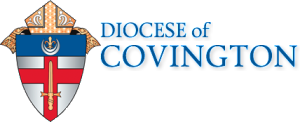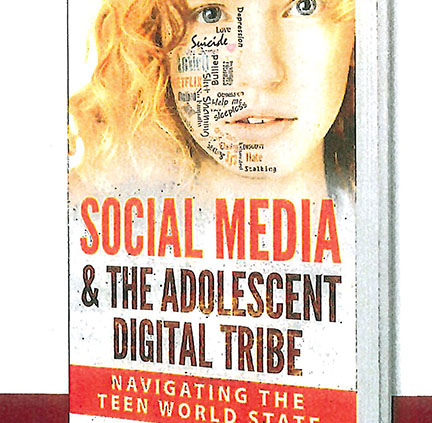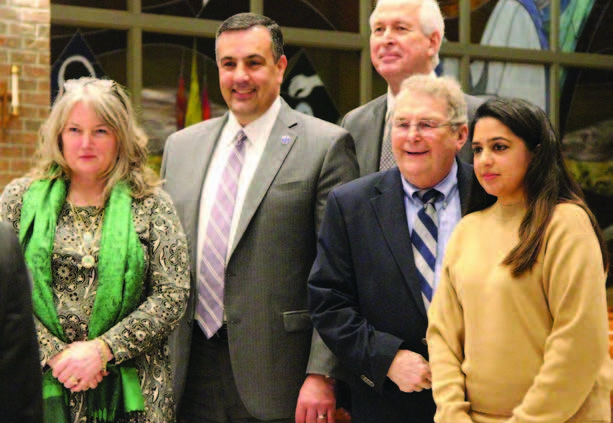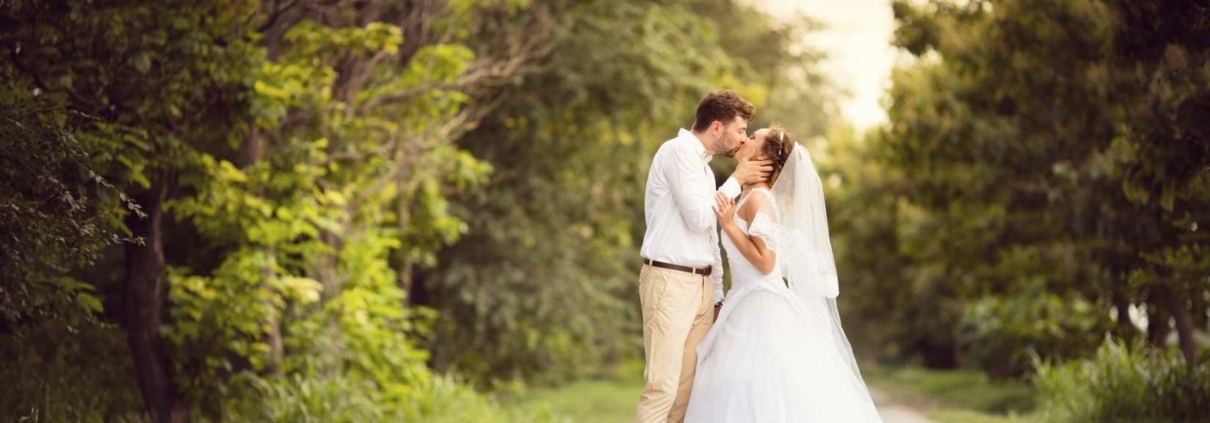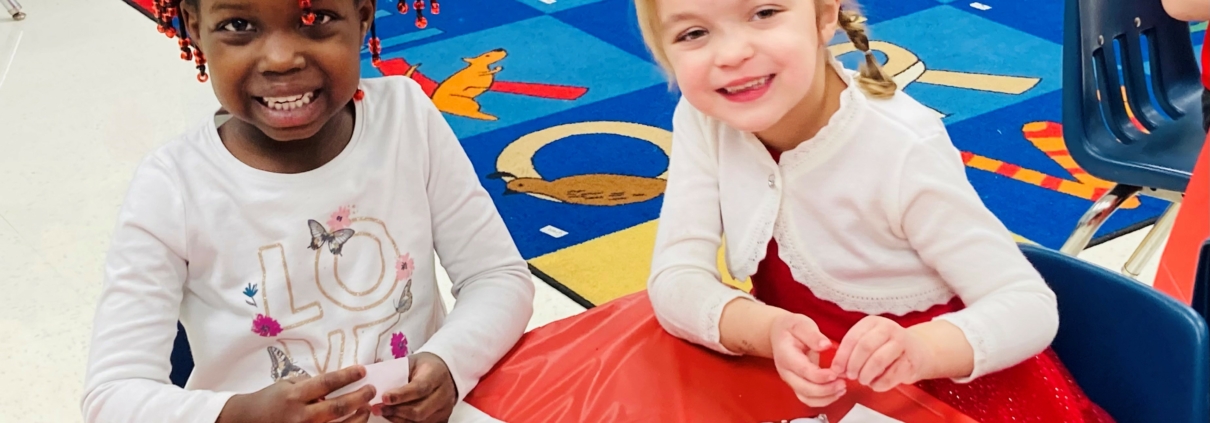Laura Keener, Editor
Dr. Ray Hebert, executive director, Thomas More University’s William T. Robinson III Institute for Religious Liberty, welcomed students and guests, Feb. 16, to Mary, Seat of Wisdom Chapel for a discussion on “Political Partisanship and Its Impact on the Future of Religious Liberty.”
Asma Uddin, a religious liberty lawyer and scholar, was the keynote speaker, with Dr. William Madges, chair of Theology Department, Xavier University, as commentator. Dr Catherine Sherron, chair of TMU’s Philosophy, Political Science & Interdisciplinary Studies, was the moderator.
Ms. Uddin introduced herself as “an American Muslim and I fight for the rights of Christians.” Among the high-profile cases that Ms. Uddin has argued include: Burwell v. Hobby Lobby, a case asserting Hobby Lobby’s religious exemption against the Affordable Care Act’s contraception mandate; Carson v. Makin requiring the state of Maine to fund religious education at private religious schools as part of its tuition assistance program; and Kennedy v. Bremerton School District, determining that high school football Coach Kennedy’s First Amendment rights were violated after he lost his job for praying at the 50-yard line after games.
“I have defended the rights of Christians across the world … I have been motivated by a single principle: that religious liberty for some is religious liberty for none,” Ms. Uddin said.
Addressing the evening’s topic, Ms. Uddin said that to understand political polarization, it’s good to understand polarization in general and group identity.
“The idea is very simple. Each of us has our group. Our group is the ‘in group,’ and those outside our group are the ‘out group.’ Our attachment to our group is so significant that loyalty boosts self-esteem. On the flip side, studies have shown that if we are isolated from our group, the stigma acts on us psychologically and, also, triggers a physical assault on our bodies. What this means in practice is that, on an evolutionary level, humans are programmed to signal their allegiance to their tribe as a way of avoiding the loneliness and stress that comes with being cast out.”
Out groups, she said, can be seen as threatening and may elicit fear and hostile reactions, especially when the status gap begins to close between the in group — the group that is larger in numbers and holds the majority of power — and the out group.
“In America today, many of us have allegiance to our political tribes in a way that’s not very different from the usual intergroup interaction or competition,” she said. “Tribalism affects how we interpret and respond to information. Our desire for our group to win makes us less interested in finding the right answer to a particular question or debate and more interested in locating and shaping the information that will help us win the argument.”
Political tribalism, she said, is having an impact not only on political campaigns but among members of society. “Unfortunately, in today’s tribalized political environment it is becoming harder and harder to be civil,” she said. Defining civility as “clinging and caring for one’s identity, means and beliefs without degrading someone else’s in the process. It is about disagreeing without disrespect.”
Studies on intergroup bias show that an in group will react with hostility towards an out group when it finds the out group threatening. “Solving that problem requires us to lower the temperature to lower perception of the threat,” she said. Working together on shared goals, no matter how small, is a place to start.
In his commentary, Dr. Madges focused on the Catholic understanding of religious liberty by a quick historical look at the evolution of Catholic teachings. “In this exposition three interrelated concepts are extremely important — human dignity, conscience and then religious liberty,” said Dr. Madges.
The medieval and early modern Church for centuries held the idea of “extra Ecclesia nulla salus,” or “outside the Church there is no salvation.”
“The Church claimed that it alone possesses the truth necessary for human wellbeing and salvation,” said Dr. Madges.
The 19th century, he said, “was the century of revolutionary upheavals.” Intellectual revolutions — Immanuel Kant, “think for yourself”; scientific revolutions — Darwin’s theory of evolution; political revolutions – the French Revolution and Marx Revolution.
It is in this context on Dec. 8, 1864, that Pope Pius IX issues his encyclical “Quanta cura” (“With how great care”), where he spoke out against the erroneous ideas that were gaining currency in the modern world. “In short, Pius was asserting the notion that error and falsehood have no rights. Only truth should be promoted and the Catholic Church had the truth.”
Fast forward 100 years, after the Second Vatican Council pope’s have continued to affirm the principle of religious liberty very different from the 19th century, said Dr. Madges quoting extensively from Pope John Paul II 1991 World Peace Day message: “No human authority has the right to interfere with a person’s conscience. Conscience bears witness to the transcendence of the person, also in regard to society at large, and, as such, is inviolable. Conscience, however, is not an absolute placed above truth and error. Rather, by its very nature, it implies a relation to objective truth, a truth which is universal, the same for all, which all can and must seek. It is in this relation to objective truth that freedom of conscience finds its justification, in as much as it is a necessary condition for seeking the truth worthy of man, and for adhering to that truth once it is sufficiently known. This in turn necessarily requires that each individual’s conscience be respected by everyone else; people must not attempt to impose their own ‘truth’ on others. The right to profess the truth must always be upheld, but not in a way which involves contempt for those who may think differently. Truth imposes itself solely by the force of its own truth. To deny an individual complete freedom of conscience — and in particular the freedom to seek the truth — or to attempt to impose a particular way of seeing the truth, constitutes a violation of that individual’s most personal rights. This also aggravates animosities and tensions, which can easily lead to strained and hostile relations within society or even to open conflict. In the end, it is on the level of conscience that the difficult task of ensuring a firm and lasting peace is most effectively confronted.”
From Pope Francis address at the “2014 International Conference on Religious Freedom and the Global Clash of Values,” Dr. Madges quotes, “Legal systems, therefore, whether state or international, are called upon to recognize, guarantee and protect religious freedom, which is an intrinsic right inherent to human nature, to the dignity of being free, and is also a sign of a healthy democracy and one of the principal sources of the legitimacy of the State. Religious freedom, acknowledged in constitutions and laws and expressed in consistent conduct, promotes the development of relationships of mutual respect among the diverse Confessions and their healthy collaboration with the State and political society, without confusion of roles and without antagonism. In place of the global clash of values, it thus becomes possible to start from a nucleus of universally shared values, of global cooperation in view of the common good.”
In closing, Dr. Madges quipped that, “coming from a Jesuit institution, I cannot stop myself from making a Jesuit reference.” Quoting Ignatius of Loyola’s Presupposition:
“… it should be presupposed that every good Christian ought to be more eager to put a good interpretation on a neighbor’s statement than to condemn it.
Further, if one cannot interpret it favorably, one should ask how the other means it.
If the meaning is wrong, one should correct the person with love;
If this is not enough, one should search out every appropriate means through which, by understanding the statement in a good way, it may be saved.”
Image: Dr. Sherron, Dr. Joseph Chillo, president, TMU; Dr. William Madges, commentator from Xavier University; Dr. Ray Hebert and Ms. Uddin, gather for a group photo before the presentation.
